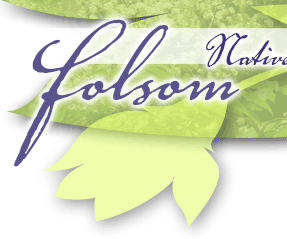








 |
|
 |
|||||
 |
 |
 |
 |
 |
 |
||
 |
|||||||
|
|
|
|
|
|
|
|
|
|
Passiflora incanata, our large native Passion Vine, is a sweet-scented blue, mauve. or white petaled beauty about three inches in diameter. My collected plants produce flowers in profusion once they reach maturity in good garden conditions. They have a strong lavender-blue color and a delightful scent. Maypops, as they are commonly called, Produce edible, egg-shaped fruit containing Several seeds that may sprout the next spring. I have not had much luck with these large vines in pots. Clair Brown describes passiflora incanata as a perennial plant with annual vine like stems which will climb to 25' in one season. It is the hardiest of all passion flowers, with a fleshy root system that will sustain it through St. Tammany's coldest winters. Given a free root run, passion vine will produce suckers some distance from its original location. The vine will dieback to the ground in winter and reappear in the vicinity in spring. This tendency to be invasive in good soil can cause problems, climbing all over other bushes. I have paired Maypop vines with Cherry Laurel trees, thus providing food for 2 wildlife favorites in one space. The Cherry Laurel provides a sturdy trellis for Maypops.
These caterpillars will strip a vine bare of leaves, which is fatal to small vines. It doesn't seem to harm mature ones. The Cherry Laurel produces many berries that attract wintering birds, especially Cedar Waxwings. In February and March the passion vines are dormant, but the laurel berries are available to large flocks of beautiful birds. When transplanting passion vines, dig as much root as possible. Keep a bucket of water in the car to set them in, and pot them as soon as possible. I use a mixture of ¼ peat moss to ¾ top soil. Passiflora grow in poor soil in the wild, but respond well to richer soil mixes. For the first year I leave my plants potted, in light shade watering them when dry. Occasionally I use a weak liquid fertilizer. Sometimes the vine appears to die, only to re-sprout a month later. Since they are potted, I over winter them in a small cool greenhouse. In spring, when frost has passed, transplant them into part shade, but where they can grow to reach the full sun. Young transplants like the cover of other plants near them. With the onset of summer's heat, passion vines grow vigorously, wrapping tendrils around everything near them. A sturdy trellis is a must.
Passiflora lutea makes small oblong fruit that re-seed the next generation of plants. P. lutea is best grown in part shade. Whenever the Gulf Fritillary caterpillars appear on its leaves, I remove them to a large Maypop vine. For those with passionate interests beyond our two native varieties, I highly recommend Passion Flowers by John Vanderplank. It is a beautifully illustrated guide to over 100 of the 400 identified passiflora species. It is filled with helpful information to grow these vines successfully. Reference: Vanderplank, J. Passion Flowers, MIT Press, Cambridge, Mass. 1991 Here are some links to more information about Butterfly Gardening with Native Plants and Butterflies:
Andy & Julia's Butterfly Fieldtrip Photographs Butterfly Garden Articles The Butterfly Website - Butterfly Gardening Wikipedia - Gulf Fritillary How to Create a Butterfly Garden by Dr. Gary Noel Ross How to Make Butterfly Gardens - U. Kentucky Butterfly Gardening for Louisianans (PDF Format) - LSU AgCenter Southern Louisiana Top Butterfly Nectar & Larval Plants & Butterfly List (PDF Format) List of Butterflies in Louisiana - The Butterfly Website Native Butterfly Gardening - Florida Organic Gardening - The Butterfly Website Smithsonian Butterfly Garden Photographs copyrighted by Al & Yvonne Bordelon |
 |
 |